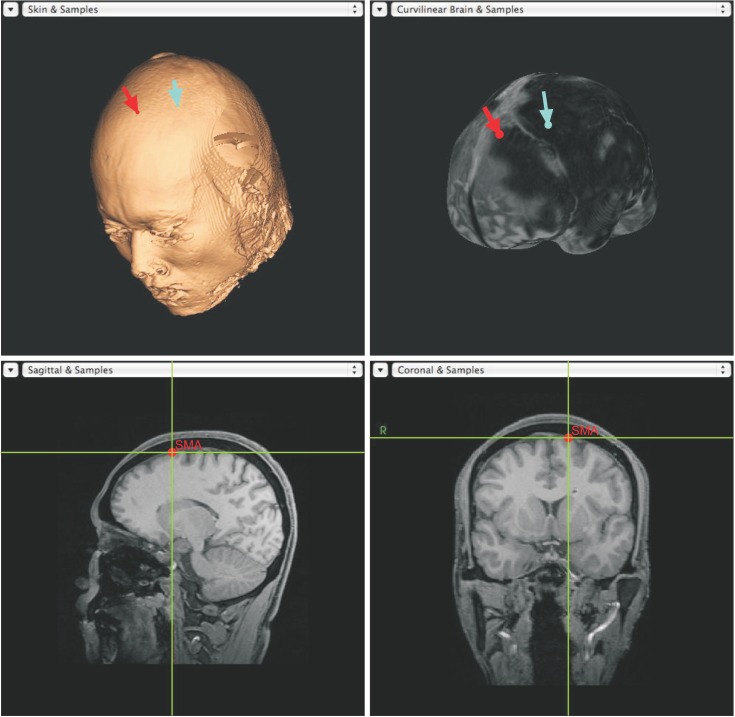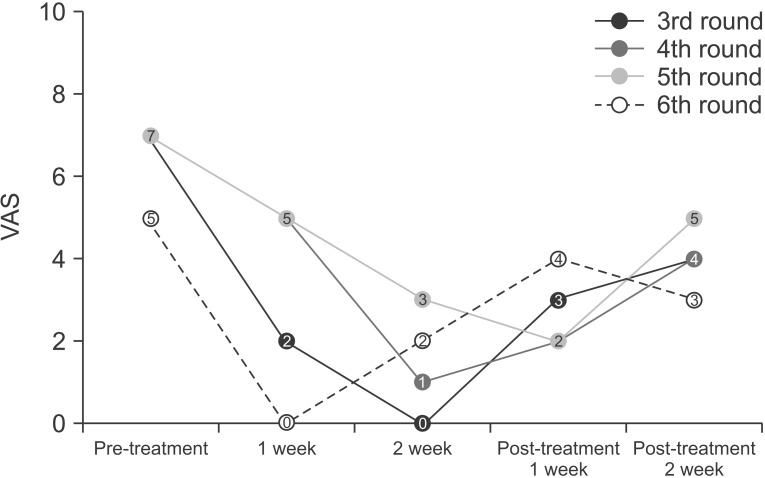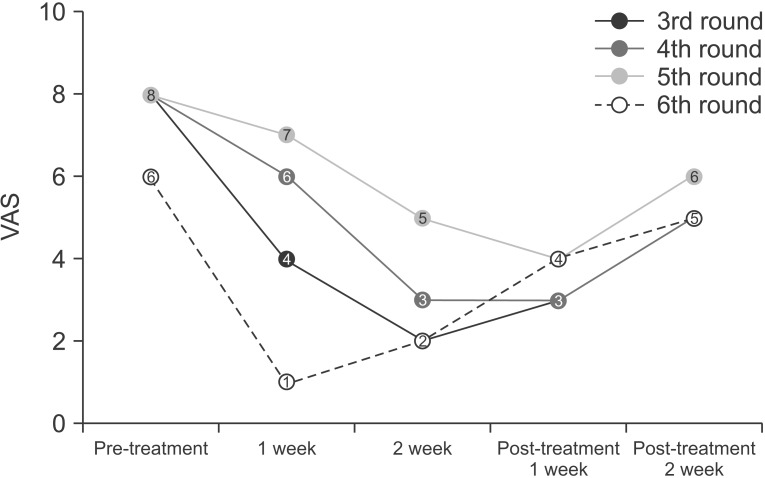Ann Rehabil Med.
2015 Aug;39(4):630-633. 10.5535/arm.2015.39.4.630.
Successful Treatment of Phantom Limb Pain by 1 Hz Repetitive Transcranial Magnetic Stimulation Over Affected Supplementary Motor Complex: A Case Report
- Affiliations
-
- 1Department of Physical & Rehabilitation Medicine, Regional Cardiocerebrovascular Center, Chonnam National University Medical School & Hospital, Gwangju, Korea. drchoiis@hanmail.net
- KMID: 2148235
- DOI: http://doi.org/10.5535/arm.2015.39.4.630
Abstract
- A 37-year-old man with a right transfemoral amputation suffered from severe phantom limb pain (PLP). After targeting the affected supplementary motor complex (SMC) or primary motor cortex (PMC) using a neuro-navigation system with 800 stimuli of 1 Hz repetitive transcranial magnetic stimulation (rTMS) at 85% of resting motor threshold, the 1 Hz rTMS over SMC dramatically reduced his visual analog scale (VAS) of PLP from 7 to 0. However, the 1 Hz rTMS over PMC failed to reduce pain. To our knowledge, this is the first case report of a successfully treated severe PLP with a low frequency rTMS over SMC in affected hemisphere.
MeSH Terms
Figure
Reference
-
1. Bittar RG, Kar-Purkayastha I, Owen SL, Bear RE, Green A, Wang S, et al. Deep brain stimulation for pain relief: a meta-analysis. J Clin Neurosci. 2005; 12:515–519. PMID: 15993077.
Article2. O'Connell NE, Wand BM, Marston L, Spencer S, Desouza LH. Non-invasive brain stimulation techniques for chronic pain. Cochrane Database Syst Rev. 2014; 4:CD008208. PMID: 24729198.3. Dettmers C, Adler T, Rzanny R, van Schayck R, Gaser C, Weiss T, et al. Increased excitability in the primary motor cortex and supplementary motor area in patients with phantom limb pain after upper limb amputation. Neurosci Lett. 2001; 307:109–112. PMID: 11427312.
Article
- Full Text Links
- Actions
-
Cited
- CITED
-
- Close
- Share
- Similar articles
-
- Repetitive transcranial magnetic stimulation for neuropathic pain
- The Effect of Sub-threshold 1 Hz and 20 Hz Repetitive Transcranial Magnetic Stimulation on Corticospinal Excitability
- Effect of Repetitive Transcranial Magnetic Stimulation in Patients with Intractable Neuropathic Pain: Cases report
- The After-effect of Sub-threshold 10 Hz Repetitive Transcranial Magnetic Stimulation on Motor Cortical Excitability
- Effects of 10 Hz Repetitive Transcranial Magnetic Stimulationin Acute Human Muscle Pain Model




